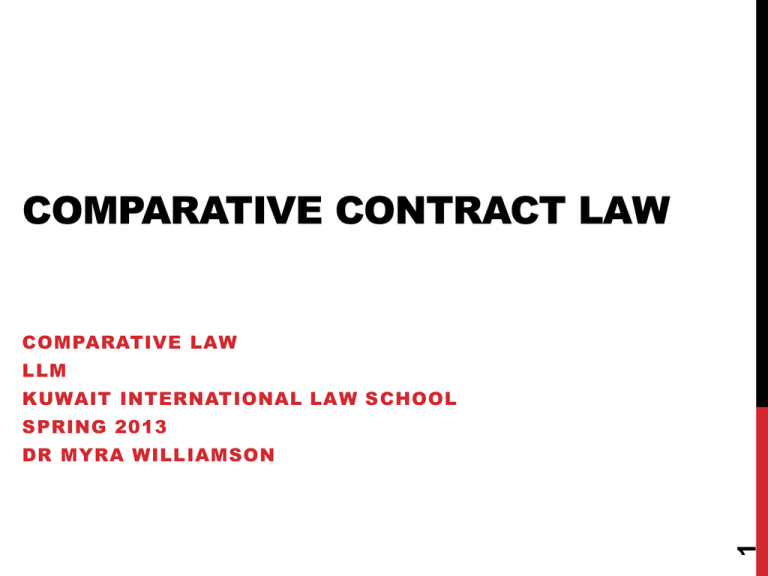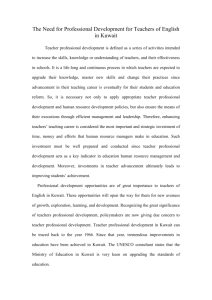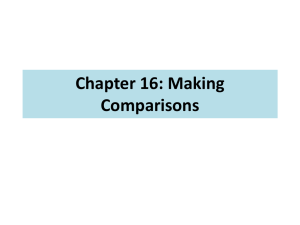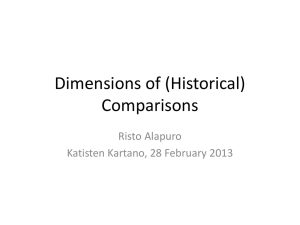Comparative Contract Law
advertisement

COMPARATIVE CONTRACT LAW COMPARATIVE LAW LLM KUWAIT INTERNATIONAL LAW SCHOOL SPRING 2013 1 DR MYRA WILLIAMSON OVERVIEW This section of the course is called “Comparative Contract Law” It has 5 main parts: 1. Introduction – to contract law, its relation to the law of obligations, some general differences between common and civil law legal systems 2. The law of contract in common law jurisdictions – main elements of contract law & some key cases 3. A particular contract law problem: “boilerplate clauses” (reference The Anglo Project at University of Oslo) 4. A particular area of contract law: consumer goods and services 5. Comparison: the Kuwait perspective Kuwait and common law Kuwait and other civil law jurisdictions Islamic contract law and other legal systems 2 International conventions relevant to contract law in Kuwait. METHODOLOGY Parts 1-4 will be teacher-led whereas part 5 will be studentled (more info in class) I will prepare material to introduce you to the main ideas; I will provide reading material to discuss in-class and on the blog; I will try to bring a guest lecturer During Parts 1-4, you will need to keep your mind open to the comparisons that can be drawn between Kuwaiti law and the ideas that we discuss 3 As we progress through parts 1-4, please conduct your own research into Kuwaiti contract law to obtain points of comparison ASSESSMENT The mid-term exam in week 9 or 10 will contain a question/questions on comparative contract law The question(s) will ask you to draw comparisons between Kuwait law and other jurisdictions To help prepare for the exam, begin drawing comparisons from the outset – take notes as you see connections/similarities/differences For example: when we learn about common law principles, think about what Kuwaiti law says about this 4 We will also have some blog entries on this topic COMPARATIVE CONTRACT LAW 5 PART 1: INTRODUCTION PART 1 – INTRODUCTION TO CONTRACT LAW The relationship between the law of obligations and common law contract law - your experience at law school: • Civil law countries teach “The Law of Obligations” at university which covers contract, delict, quasi-contract and quasi-delict • Common law countries teach “The Law of Contract” and “The Law of Torts” and within those subjects students learn about related concepts such as ‘unjust enrichment’, ‘restitution’, ‘equity’ etc 6 • Roughly, “delict” in civil law legal systems is approximately equivalent to “torts” in common law countries METHODS AND AIMS OF COMPARATIVE CONTRACT LAW What are the methods and aims of comparative contract law? See Hugh Collins, “Methods and Aims of Comparative Contract Law” 1 Oxford J. Legal Stud. 396 (1991) (available on www.drmyrawilliamson.com/students) • Collins lists 4 main aims of comparative contract law: 2. 3. 4. The international unification/harmonisation of laws based on common fundamental principles; Social theory perspective – understanding changes in legal systems and societies Seeking the best solutions to legal problems – look at foreign laws and incorporate their solutions into domestic law Understanding one’s own legal system better, through studying other legal systems 7 1. WHY STUDY COMMON LAW CONTRACT LAW IN A CIVIL LAW JURISDICTION? You might ask: what is the point of studying the “Law of Contract” from the common law system if Kuwait is mainly a civil law country? 8 • Because Kuwait is a mixed jurisdiction – so it’s interesting to see where Kuwait’s laws are from and what the similarities/differences lie • Because contracts often have a choice of law clause so its important to know about other jurisdictions to make a good choice of the applicable law • Because it’s good to know how other courts will interpret the contract • Because lots of contracts have English terms in them, even though the governing law is not England so its important to understand what those terms mean • For other reasons: Transnational contracts, public private partnerships, law firms with foreign partners, judges needing to understand foreign laws, general interest in understanding contract law SOME DIFFERENCES BETWEEN COMMON LAW AND CIVIL LAW LEGAL SYSTEMS COMMON LAW CIVIL LAW Former British colonies (including the US) Former French, Dutch, German or Portuguese colonies (ie Central and South America, large part of Europe, parts of Asia) Judicial decisions are binding on lower courts Extensive freedom of contract (few provisions are implied into the contract) Contracts are, therefore, often longer Generally, everything is permitted that is not prohibited Codified system of law Usually a constitution – most areas of law covered by comprehensive code Less scope for judge-made law Legislative enactments Courts specific to the underlying codes (eg constitutional court, administrative court) Less freedom on contract, many terms implied & parties can’t contract out of many provisions Shorter contracts Source: World Bank “PPP In Infrastructure Resource Center” available at: http://ppp.worldbank.org/public-private-partnership/legislation-regulation/framework-assessment/legalsystems/common-vs-civil-law (last accessed on 27 February 2013) 9 There is not always a written constitution or codified laws GENERAL OBSERVATIONS FOR A CIVIL LAWYER STUDYING COMMON LAW • Most of the contract law in common law legal systems comes from judge-made law (although there are statutes that are relevant, too). So, whilst there are general principles of contract law they have come from the courts • There is no difference between private and public contracts: if the government (state or local) is a party to a contract, the contract is still the same (no “public contracts law”) • There are significant differences between common law and European civil law but a Justinian wrote, ‘nearly all contracts…are common to all people” 10 Source: Whincup, M., Contract Law and Pratice – The English System with Scottish, Commonwealth and Continental Comparisons (Kluwer Law: the Netherlands, 2006) NEXT: THE LAW OF CONTRACT In the next slideshow we will consider questions such as: What is contract law all about? Why are we looking at contract in the English common law? 11 What are the main elements of the contract?











